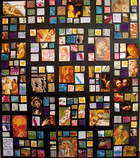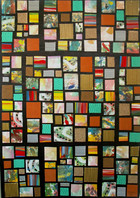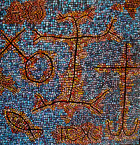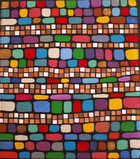Mosaics & Stained Glass
Light is everything in art. No one visits a museum in total darkness. Light is also central to Christian theology. Jesus proclaimed himself “the Light of the World (John 8:12)," and believers are urged to “walk in the light, as he is in the light. (I John 1:7 )”
Aesthetics and theology achieved a light-filled symbiosis in two particularly Christian art forms—wall mosaics and stained glass. The Greco-Roman world used mosaics in floor decoration, but it was Early Christian craftsmen who discovered what astonishing visual effects could be created by placing gold and colored glass tesserae (tiles) at varying angles into basilica walls. As churches rose higher, allowing more window space, medieval European artisans filled the openings with stained glass, reaching a level of perfection in this art form, dependent on light, which is unsurpassed to this day.
I have seen two miracles in mosaic and stained glass on my sacred art pilgrimage: the jewel- box chapel of 6th century Byzantine mosaics in the Basilica of San Vitale in Ravenna and the beautifully-preserved 13th century rose windows in the Notre-Dame-de-Chartres Cathedral. Such glorious visions in tile and glass inspired me to try my hand at making "paper" mosaics and stained glass.
Sometimes, I simply replicated the look of tile and glass shards by painting tiny dots or repetitive geometric shapes in grid-like rows on paper and canvas. I also experimented with gluing color-paper "tesserae" onto cardboard and wood in imitation of mosaic tiles. You will find echoes in these pieces of everything from Byzantine wall murals to the pointillist paintings of French Post-Impressionist Georges Seurat and the abstract expressionist landscapes of Swiss Artist Paul Klee. Let there be light!







